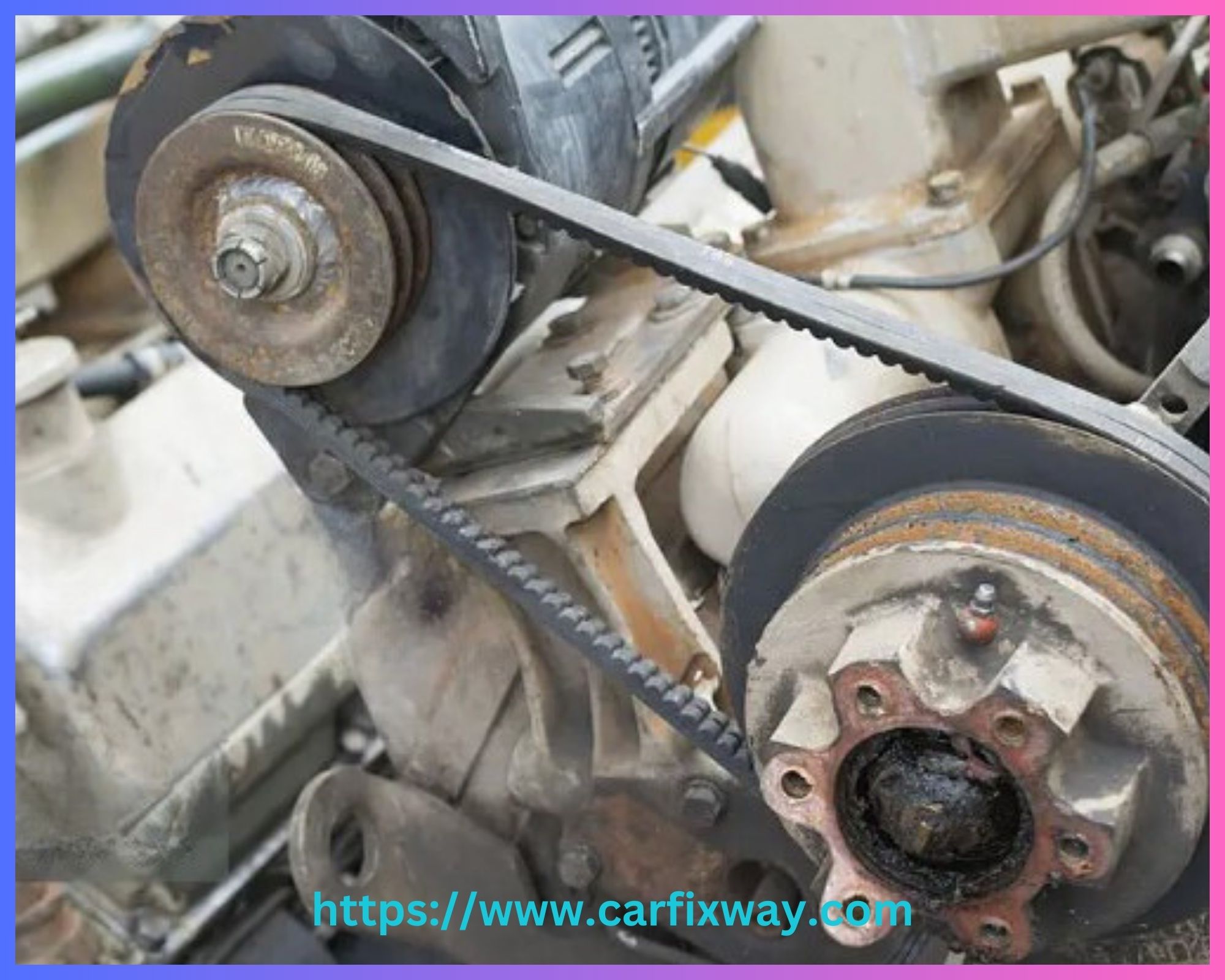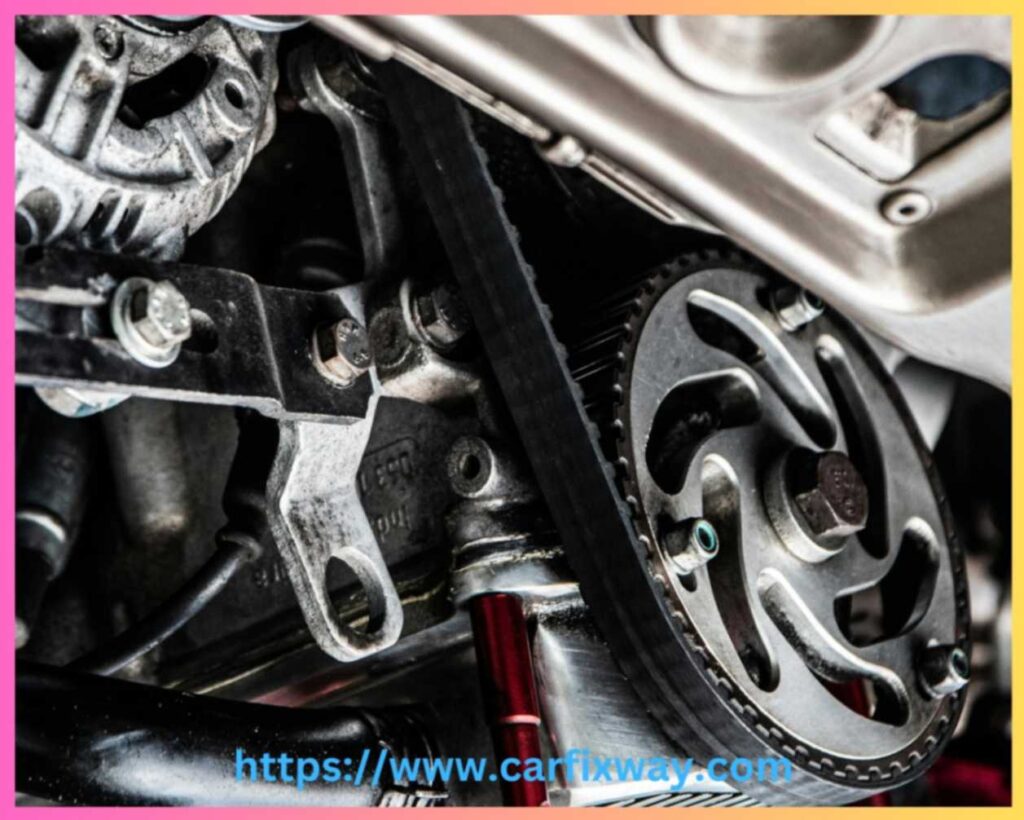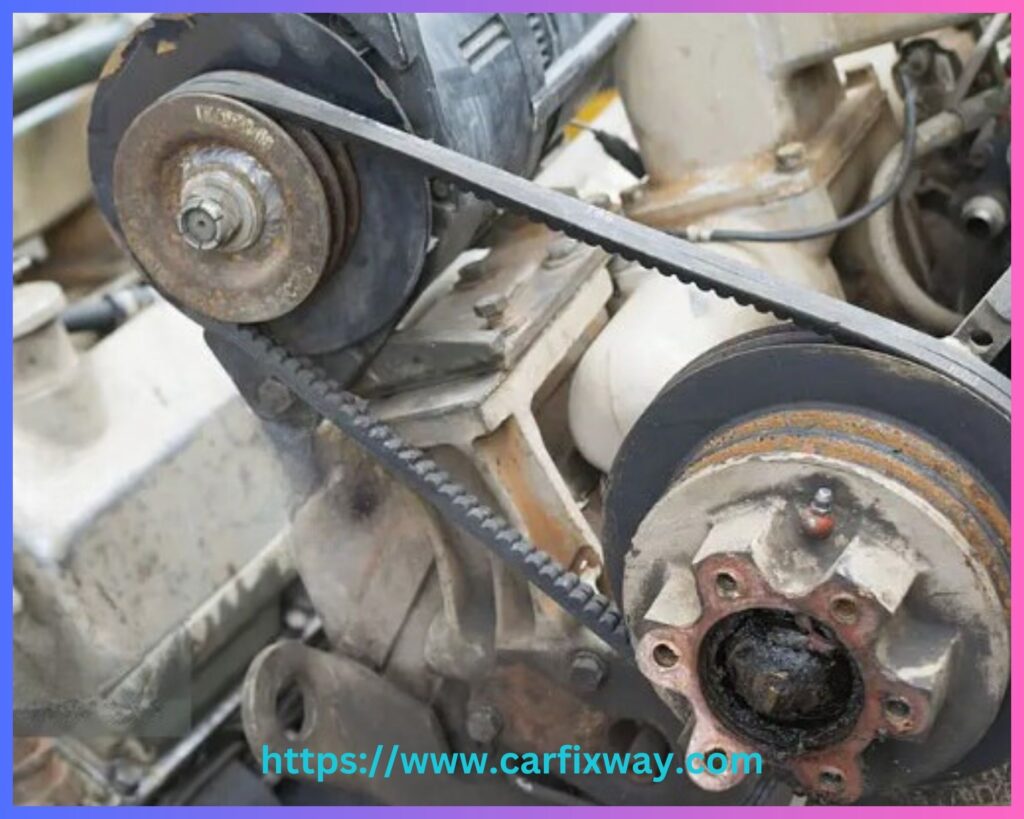Phone:
(701)814-6992
Physical address:
6296 Donnelly Plaza
Ratkeville, Bahamas.


Many car owners wonder, does the timing belt affect transmission? This confusion often leads to unnecessary repairs and costly misunderstandings. The timing belt plays a critical role in engine operation, but does it directly influence the transmission?
With so much misinformation, it’s easy to see why mechanics and drivers struggle with this question. Without a clear understanding, some may replace or adjust parts that aren’t related, wasting time and money. Knowing how these components interact can prevent this.
In this article, we’ll explore the function of the timing belt, its effect (or lack thereof) on the transmission, and provide a detailed explanation to help you avoid common mistakes. By the end, you’ll know exactly how these systems work together and avoid any costly misconceptions.
A timing belt ensures that the camshaft and crankshaft rotate in perfect harmony, controlling the opening and closing of the engine’s valves in sync with the pistons’ movement.
This synchronization is critical for optimal engine performance. If the timing is off, the engine won’t run smoothly, potentially leading to severe damage in some cases, especially in interference engines
The camshaft and crankshaft are key players in the engine’s operation. The camshaft manages the valves, allowing air and fuel to enter and exhaust gases to exit the combustion chamber. Meanwhile, the crankshaft translates the pistons’ up-and-down movement into rotational motion. The timing belt or chain ensures these components work in tandem, maintaining precise timing to avoid engine misfires
Proper engine timing is essential for fuel efficiency and engine longevity. It optimizes the combustion process by ensuring that the fuel-air mixture ignites at the right moment, maximizing power output while minimizing fuel consumption. Incorrect timing, on the other hand, can lead to power loss, increased emissions, and potential engine damage
Misaligned camshaft and crankshaft due to a faulty timing belt can cause engine failure.
This could lead to costly repairs and severe engine damage if not fixed.
Regularly replacing your timing belt as recommended ensures optimal engine performance and prevents costly breakdowns.
Key Points:
The timing belt does not control your vehicle’s transmission functions, but it plays a crucial role in engine performance. While the timing belt drives the camshaft and accessories like the water pump, it is unrelated to transmission control. Over time, a worn or damaged timing belt can lead to significant engine issues, such as inefficient operation or engine failure. Therefore, it’s essential to maintain your timing belt to keep the engine running smoothly and efficiently.
Worn-out timing belt affects engine performance.
Without a functioning timing belt, your engine could experience inefficiencies or even stop working.
Regular timing belt maintenance ensures smooth engine operation.
When a timing belt fails, it can cause engine misfires, which indirectly impact how the transmission feels. Misfires happen when the timing belt slips, causing the crankshaft and camshaft to misalign, resulting in inefficient engine firing. This affects power delivery, making your transmission feel sluggish or jerky, even though the issue originates in the engine.
Timing belt failure causes engine misfires and power loss.
These misfires can make your transmission feel off, even though it’s not the source of the problem.
Regularly inspect the timing belt to prevent misfires and maintain smooth power delivery.
Many car owners believe timing belts are more likely to break when idling at stoplights or sitting still, which is partly true. Timing belts are under stress during these conditions due to factors like camshaft movement.
Moreover, the spring pressure on lifters may cause the camshaft to slightly “outrun” the crankshaft, especially at low RPMs. This results in tension, making the timing belt more susceptible to failure during idle than at higher speeds.
The confusion between timing belts and chains stems from their construction. Timing chains are metal and more durable, often lasting the lifetime of the vehicle.
On the other hand, timing belts are made from reinforced rubber and typically need to be replaced between 60,000 to 100,000 miles. The difference in material leads to a significant disparity in maintenance needs, which confuses many drivers

If your car’s timing belt is failing, it’s crucial to catch the signs early. Here are 5 common symptoms to watch for:
When a timing belt breaks or slips, the results can be disastrous.
If the belt’s teeth break, the engine can stall while driving.
A worn belt can cause the engine to misfire as it struggles to maintain proper timing.
These issues can lead to costly repairs and engine damage if not addressed promptly.
Not directly, but it can feel like it due to reduced engine power. When your engine is struggling, power delivery to the transmission may feel sluggish. A faulty timing belt affects the overall performance, which might seem like a transmission issue but is engine-related.
Reduced power delivery can mimic transmission problems.
If the engine or transmission sensors detect an issue, the car may enter limp mode to prevent further damage.
Timing belt failure can cause serious engine problems. When the belt is worn out or failing, it can cause the engine’s cylinders to misfire by making them open and close out of sync. This misfire may lead to rough engine performance or even complete engine shutdown. The solution? Replace the timing belt immediately to avoid major damage.
One of the most noticeable signs of a failing serpentine belt is a squealing or whining noise during startup or when turning the steering wheel. This is usually caused by reduced tension on the belt or deterioration over time. While it may not directly impact engine power, the noise can signal potential trouble ahead.
A timing belt replacement is essential to keeping your engine running smoothly. The timing belt, also called a cambelt, synchronizes the engine’s components to ensure proper timing. It should be replaced according to your vehicle’s owner’s manual, typically between 40,000 to 100,000 miles. If you drive less, it is often suggested to replace the timing belt every four to five years. Failure to do so may result in severe damage to your engine, leading to expensive repairs. Here are some key points.
Preventive maintenance is critical to avoid catastrophic engine damage from a broken timing belt. A failed timing belt can lead to engine failure and expensive repair bills. Replacing the belt on time helps prevent these costly issues and ensures your car runs efficiently. Here’s why it’s crucial:
Replacing a timing belt can feel like a costly repair, but it’s critical for your engine’s health. Most timing belt kits, which include the belt, tensioner, and pulleys, range between $100 and $350. The labor to install it usually takes between 3-5 hours, depending on your car model, bringing the total cost to $400 – $1,000.
A faulty or broken timing belt can cause severe engine damage. When the timing belt fails, especially while driving, the pistons often collide with the valves, bending or even breaking them. In such cases, the engine may be wrecked, leading to costly repairs.
Fixing this involves disassembling the engine and replacing damaged parts, such as:
A worn timing belt can seriously damage your engine’s performance. If you experience sluggish acceleration or reduced power, it might be due to a faulty timing belt. When the belt wears out, it affects the timing between the engine and transmission, leading to poor performance.
A faulty timing belt not only reduces engine performance but can also cause expensive damage like bent valves or destroyed pistons if the belt breaks. This can result in severe transmission issues.
Ignoring these signs may lead to more costly repairs, such as valve damage, piston destruction, or even total engine failure. Replacing these parts can be highly expensive.
To avoid costly repairs, check your timing belt regularly. If you notice signs of wear, it’s better to replace it before further damage occurs.
This cost depends on the country, raw material price, and location of the job done.
The timing belt plays a crucial role in ensuring the smooth operation of the engine, it doesn’t directly affect the transmission. However, if the timing belt fails, it can cause engine issues that may feel similar to transmission problems. Replacing your timing belt as recommended helps avoid costly engine damage and keeps your vehicle running efficiently.
No, the timing belt does not directly affect the transmission. It controls engine timing, but issues with it can cause poor engine performance, which may feel similar to transmission problems.
A worn timing belt won’t cause shifting issues in your transmission. However, engine misfires from a bad timing belt may lead to performance problems that could mimic transmission issues.
If the timing belt breaks, your engine will stop running, but it won’t directly impact the transmission. Engine damage can be severe, leading to costly repairs.
No, the timing belt and transmission function separately. The timing belt controls engine timing, while the transmission manages gear shifting.
Replacing the timing belt will not resolve transmission issues. They are independent components, and transmission problems require specific transmission-related repairs.
A failing timing belt may cause engine misfires, ticking noises, or poor performance. These symptoms are engine-related, not transmission-related.
Yes, a bad timing belt can cause your engine to stall, but it won’t cause the transmission to fail or affect shifting.
Most timing belts should be replaced every 60,000–100,000 miles, depending on your car’s manufacturer’s recommendations. This helps avoid major engine damage.
No, the serpentine belt doesn’t affect the transmission, but it can cause engine accessories like the alternator and power steering to fail, which can indirectly affect vehicle performance.
No, the timing belt is part of the engine, not the transmission. It keeps the crankshaft and camshaft in sync to ensure proper engine operation.